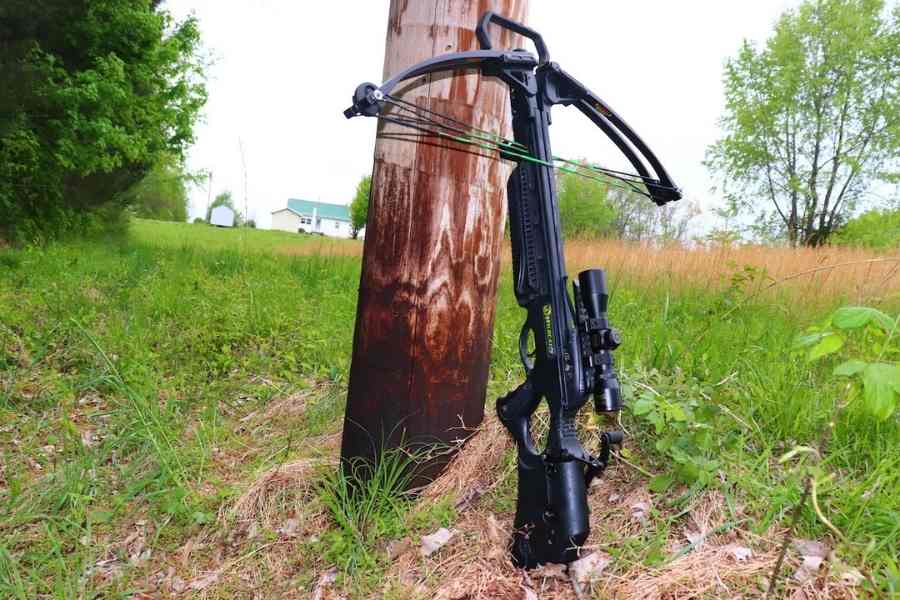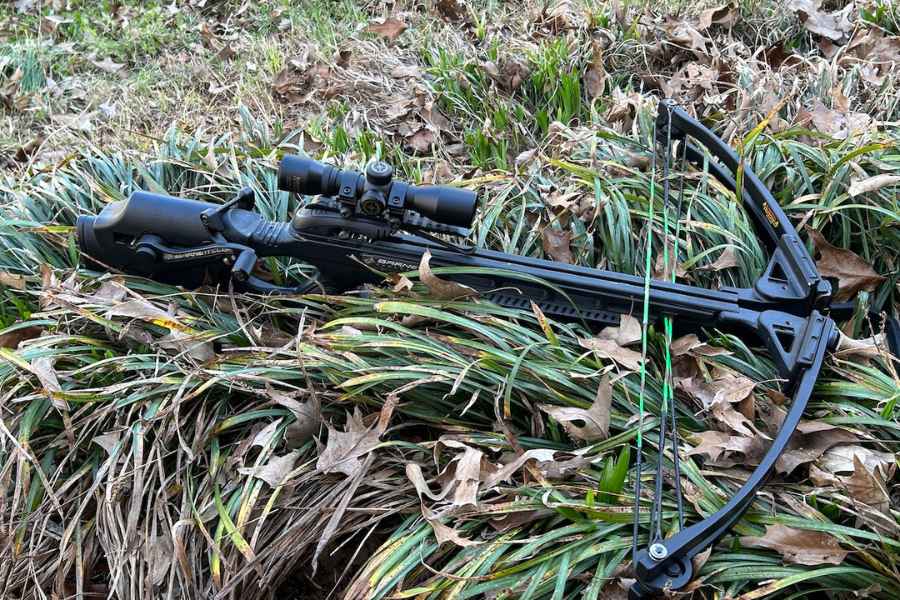Many prospective crossbow archers find themselves with a host of unanswered questions regarding the speed at which crossbow bolts or arrows are fired.
While such speeds tend to vary from one model of a crossbow to the next, there are some average figures that can be used to accurately depict modern crossbow speeds in general.
Of course, speed is an important variable to consider when purchasing a crossbow, as it ultimately affects a host of overall performance characteristics as a whole.
Both trajectory and downrange kinetic energy are heavily influenced by a crossbow’s speed or lack thereof.
Therefore, arrow/bolt speed warrants adequate consideration when determining which crossbow to purchase.
Contents (Jump to Topic)
ToggleThe Importance of Speed
A crossbow’s overall speed is of vast importance for a number of reasons, many of which are performance-related in nature.
The first performance characteristic influenced by a crossbow’s speed is the overall arrow/bolt trajectory. The faster a crossbow’s speed, the flatter the trajectory of an arrow or bolt that is fired.
Simply put, arrow drop is minimized at higher speeds, while it is exemplified at lower speeds.
read.. The Ultimate Guide to Choosing the Perfect Crossbow Target
As such, one is required to compensate less for arrow drop when shooting a relatively fast compound bow when compared to that which is required when shooting a slower crossbow.
This makes it easier to overcome slight miscalculations in the overall shot distance.
It is also important to consider the fact that the downrange kinetic energy delivered by a bolt or arrow is directly influenced by the speed at which it is fired.
In fact, downrange kinetic energy is derived by factoring arrow/bolt speed and arrow/bolt mass.
Since the mass of a projectile remains the same, speed becomes the most pertinent factor of influence at various distances.
Kinetic energy is important, as it directly determines the amount of downrange force transferred to a specific target.
The higher this energy, the greater penetration an arrow or bolt achieves. When kinetic energy is maximized, damage to a game animal’s vital tissue is increased, with more defined blood trails often coming as the most noteworthy result.
Average Crossbow Speeds

Like all forms of archery equipment, crossbows have only become more efficient with the passage of time.
Crossbows are now capable of firing at much higher speeds than they were just 20 years earlier, continuing to advance in this facet with each passing year.
Generally speaking, the speed of today’s crossbows falls within a range of 300-500 FPS, with somewhere in the neighborhood of 360-440 FPS serving as a reasonable average.
As a rule of thumb, faster crossbows are priced accordingly, with crossbows nearing the 500 FPS mark carrying rather steep retail prices.
On the other end of the spectrum, crossbows shooting at speeds around 350 FPS can often be purchased at an economical price point.
How Many MPH Do Crossbows Shoot?
Though the speed of a crossbow-fired projectile, whether a bolt or arrow, is generally listed under the measure FPS (Feet Per Second), it is not uncommon to wonder what this would equate to in miles per hour.
This unit of measurement is, at times, more easily described to those that are now familiar with crossbows or archery in general.
Luckily, such findings are easily tabulated using a specific formula, which is as follows:
FPS X 0.681818 = MPH
Using 400 FPS as an average crossbow speed, one could determine that most crossbows are propelling bolts/arrows at average speeds of just in excess of 272 MPH.
On the other hand, the fastest crossbows on today’s market, which are often rated at speeds of 500 FPS, would be propelling arrows or bolts to approximately 340 MPH.
This same equation can be used to figure any bow’s speed in MPH. Simply input a bow’s rated FPS speed in the equation above and solve for the undefined variable (MPH).
This same equation applies to vertical bows and can be figured in an identical manner.
Is Faster Always Better?
The next question that most prospective crossbow archers ask is whether a faster crossbow is always the most effective.
The truth of the matter is while a faster crossbow does offer certain advantages, even crossbows at the lower end of the speed spectrum can be used successfully for both hunting and target shooting.
Even slower crossbows (approximately 300 FPS) are more than fast enough to take wild game at various ranges.
However, it is ever more important to accurately figure the yardage of any shot that is to be taken due to the fact slower crossbows experience a more pronounced degree of shot drop than those that fire at faster speeds.
read.. how to measure a crossbow string
Additionally, while faster crossbows might provide some degree of insurance against deer “ducking the string” or reacting to the sound of the shot itself, this insurance is minor at best.
In any event, adopting a stealthy hunting approach is far more effective in this regard than simply banking on speed alone.
Most Bang for Your Buck
Though it might be worth considering speed when purchasing a crossbow, this is far from the only characteristic of merit.
Equally important is the crossbow’s construction and overall quality of the build. One is better served to buy a flawlessly crafted crossbow offered by a reputable manufacturer than a crossbow that is blazingly quick but little else.
Of course, one can find each of these characteristics in a single crossbow, assuming you have a large enough budget at your disposal.
Crossbows of this nature typically command a retail price in excess of $1,000, making them out of the question for many who are new to the sport of archery.
read.. Bear Saga 405 Crossbow
It is also worth mentioning that one is best advised to steer clear of blazingly quick crossbows that are new to the market.
With excess speed comes exemplified stress on many moving parts and components. It is not rare to see high-speed bows exhibit a certain degree of cam and limb failure during their first couple of years of sales.
By year three, manufacturers have typically sorted out these initial growing pains.






